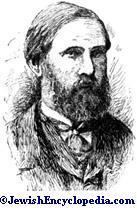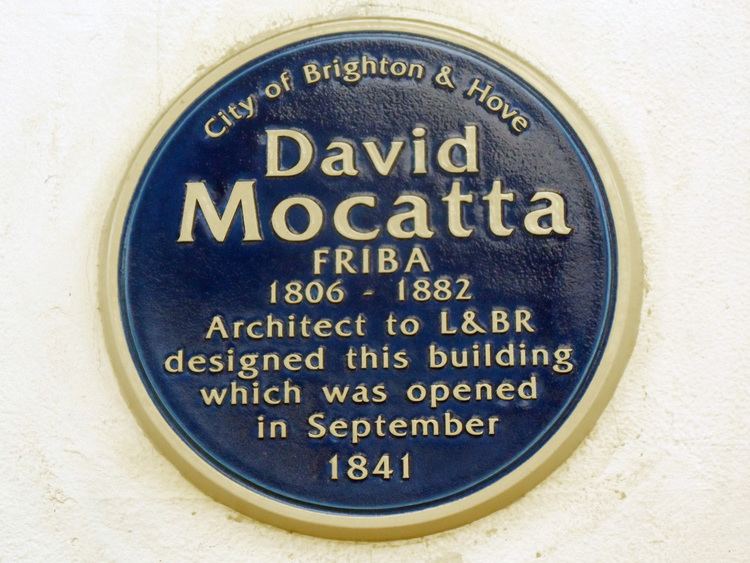Nationality British Occupation Architect | Name David Mocatta Role Architect | |
 | ||
Buildings | ||
Blue plaques unveiled at Brighton Station in tribute to railway architects
David Mocatta (1806–1882) was a British architect and a member of the Anglo-Jewish Mocatta family.
Contents
- Blue plaques unveiled at Brighton Station in tribute to railway architects
- Early career
- Railway architecture
- Later career
- Works
- References

Early career
Mocatta was born to a Sephardic Jewish family in 1806 and studied in London from 1821 to 1827 under Sir John Soane and then travelled in Italy during 1829–30. By 1839 he was in practice together with W.J. Mocatta at 32 Brunswick Square in Bloomsbury where he remained until 1846, before moving to 57 Old Broad Street in the City of London. His synagogue in Ramsgate for Moses Montefiore (1833) was possibly the first in England to be designed by a Jewish architect. The West London Synagogue of British Jews commissioned Mocatta to design both their temporary premises in Burton Street (1841) and their building in Margaret Street (1851). The latter was a substantial structure, seating 400 and costing more than £4,000. He was elected a Fellow of the Institute of British Architects (later the RIBA) in 1836, and was an early member of its council.
Railway architecture
Mocatta was appointed architect of the London and Brighton Railway in 1839, designing the company's headquarters at Brighton railway station and ten other intermediate stations on the line. Brighton Station was said to have many similarities to the Nine Elms railway station of the London and Southampton Railway (1838) designed by Sir William Tite. The intermediate stations were notable as they were constructed according to a standard plan and layout usually in the Italianate style. Mocatta also designed balustrades and a set of eight Italianate pavilions to ornament John Urpeth Rastrick's Ouse Valley Viaduct for the L&BR.
Mocatta was also involved with Charles Pearson's scheme for a Central London Railway station in Farringdon Street and drew up plans circa 1845, but this scheme was never implemented.
Later career
Mocatta provided the winning entry for a competition to design the London Fever Hospital in 1848. He also drew up designs for Stowlangtoft Hall, c. 1846 and the present building (built 1859) was possibly built from his designs. He retired from architecture early, during the 1850s having inherited the family fortunes.
In later years he became Senior Trustee of the Soane Museum. He was a founder member of the West London Synagogue eventually becoming chairman of its council. Mocatta House, a modern office development in Trafalgar Place, Brighton is named after him.
